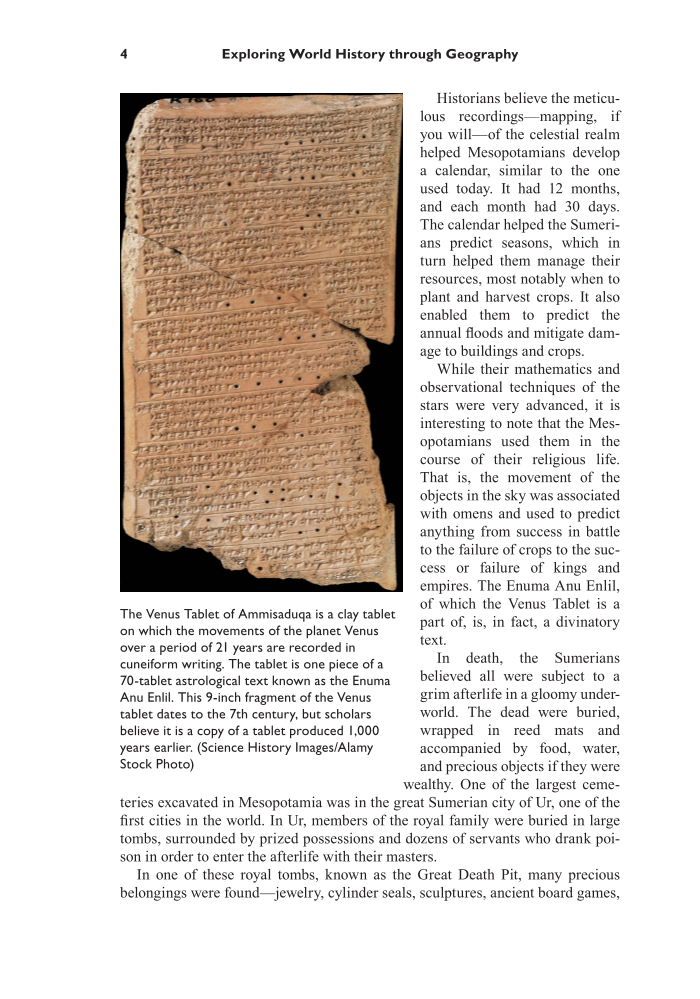4 Exploring World History through Geography Historians believe the meticu- lous recordings—mapping, if you will—of the celestial realm helped Mesopotamians develop a calendar, similar to the one used today. It had 12 months, and each month had 30 days. The calendar helped the Sumeri- ans predict seasons, which in turn helped them manage their resources, most notably when to plant and harvest crops. It also enabled them to predict the annual floods and mitigate dam- age to buildings and crops. While their mathematics and observational techniques of the stars were very advanced, it is interesting to note that the Mes- opotamians used them in the course of their religious life. That is, the movement of the objects in the sky was associated with omens and used to predict anything from success in battle to the failure of crops to the suc- cess or failure of kings and empires. The Enuma Anu Enlil, of which the Venus Tablet is a part of, is, in fact, a divinatory text. In death, the Sumerians believed all were subject to a grim afterlife in a gloomy under- world. The dead were buried, wrapped in reed mats and accompanied by food, water, and precious objects if they were wealthy. One of the largest ceme- teries excavated in Mesopotamia was in the great Sumerian city of Ur, one of the first cities in the world. In Ur, members of the royal family were buried in large tombs, surrounded by prized possessions and dozens of servants who drank poi- son in order to enter the afterlife with their masters. In one of these royal tombs, known as the Great Death Pit, many precious belongings were found—jewelry, cylinder seals, sculptures, ancient board games, The Venus Tablet of Ammisaduqa is a clay tablet on which the movements of the planet Venus over a period of 21 years are recorded in cuneiform writing. The tablet is one piece of a 70-tablet astrological text known as the Enuma Anu Enlil. This 9-inch fragment of the Venus tablet dates to the 7th century, but scholars believe it is a copy of a tablet produced 1,000 years earlier. (Science History Images/Alamy Stock Photo)
Document Details My Account Print multiple pages
Print
You have printed 0 times in the last 24 hours.
Your print count will reset on at .
You may print 0 more time(s) before then.
You may print a maximum of 0 pages at a time.























































































































































































































































































































































































